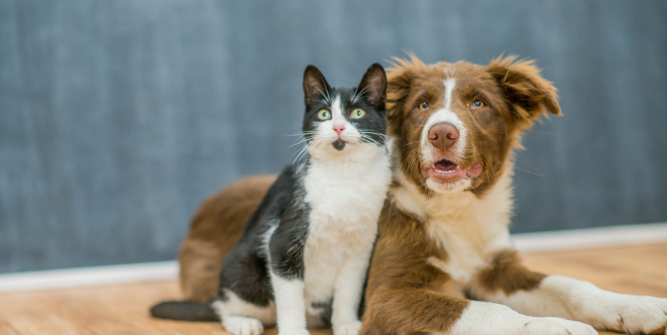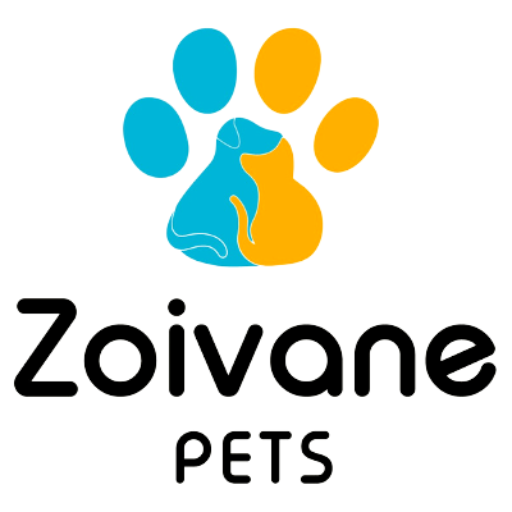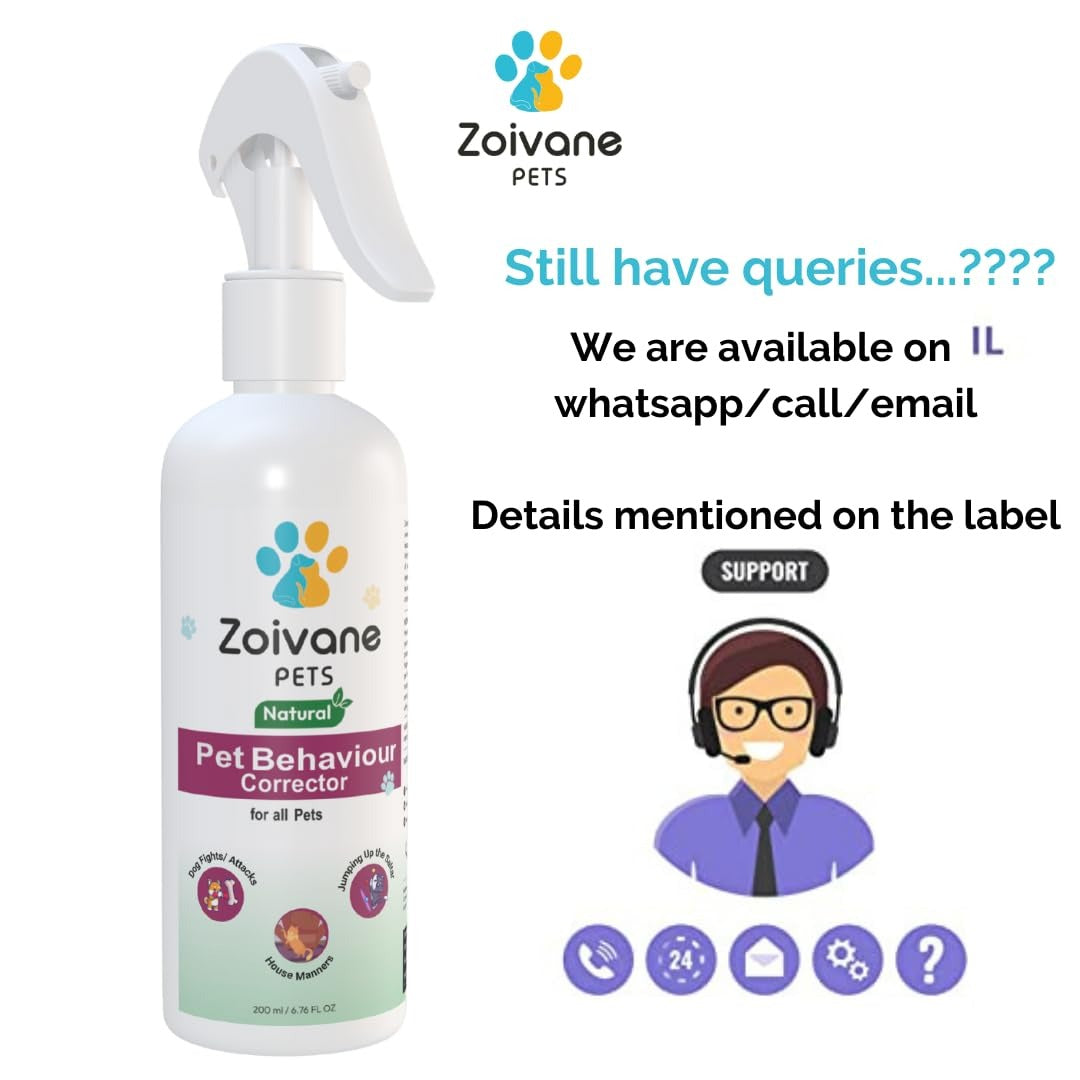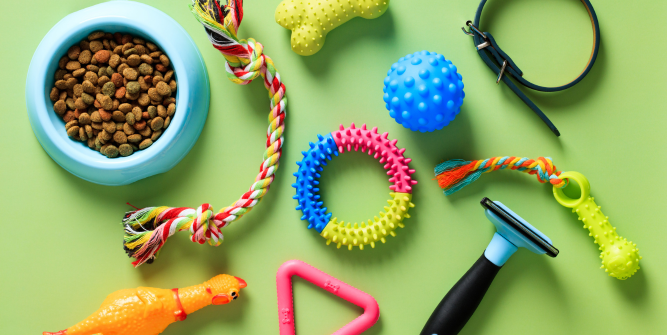
What Causes Hair Loss in Cats and Dogs?
Introduction
As pet owners, we cherish the sight of our furry companions, their luscious coats gleaming under the sunlight. However, when we notice patches of hair loss or excessive shedding, it can be alarming and prompt concerns about our pet's health and well-being. Understanding the myriad Causes of hair loss In Dogs and Cats is crucial for providing optimal care to our beloved companions. In this comprehensive guide, we delve into the intricate world of fur-related ailments, exploring the various factors that contribute to hair loss in dogs and cats.
Understanding hair loss in dogs and cats
Understanding hair loss in dogs and cats is essential for pet owners to provide the best possible care for their furry companions. Hair loss, also known as alopecia, can occur for a variety of reasons, ranging from benign factors such as seasonal shedding to more serious underlying health conditions like hormonal imbalances or skin infections. By recognizing the signs and symptoms, and understanding its potential Causes of hair loss In Dogs and Cats, pet owners can take proactive steps to address the issue promptly.
Regular grooming, proper nutrition, and routine veterinary check-ups play crucial roles in maintaining healthy skin and coat in pets, helping to prevent and manage hair loss effectively. Additionally, staying informed about breed-specific tendencies and potential allergens can aid in identifying and mitigating hair loss triggers specific to individual pets. Ultimately, a comprehensive understanding of hair loss empowers pet owners to prioritize their pet's well-being and ensure they enjoy a vibrant, lustrous coat throughout their lives.
Pet Hair Loss Causes
Hair loss in pets can stem from a multitude of factors, ranging from benign to severe. Understanding these causes of hair loss in dogs and cats is pivotal to effectively addressing the issue effectively. Whether it's seasonal shedding, skin infections, or underlying health conditions, each factor demands unique attention and care. Addressing pet hair loss causes requires a comprehensive approach that considers various factors contributing to the problem. Seasonal shedding is a common occurrence among many pets, particularly during transitions between seasons.
However, persistent or excessive shedding could indicate underlying issues such as skin infections caused by parasites like fleas or mites. Additionally, allergic reactions to food, environmental allergens, or grooming products can also lead to hair loss in pets. Moreover, hormonal imbalances in pets or systemic diseases like thyroid disorders or autoimmune conditions might manifest through hair loss. Hence, a thorough examination by a veterinarian is essential to identify the specific Causes of hair loss In Dogs and Cats and devise an appropriate treatment plan tailored to the pet's needs.
‣ Flea Allergy Dermatitis:
Flea infestations can wreak havoc on a pet's skin, triggering allergic reactions and intense itching, ultimately leading to hair loss. Flea allergy dermatitis is one of the most common Causes of hair loss In Dogs and Cats, highlighting the importance of flea prevention measures and prompt treatment of infestations. Pets can develop allergic reactions to various substances, including food ingredients, pollen, or household cleaners, which may manifest as skin inflammation and hair loss. Identifying and eliminating allergens from your pet's environment and diet can mitigate allergic reactions and promote coat health.
‣ Environmental Factors:
Environmental factors such as extreme weather conditions, exposure to harsh chemicals, or allergens in the surroundings can contribute to hair loss in pets. Identifying and minimizing exposure to potential irritants can help alleviate symptoms and promote coat health.
‣ Hormonal Imbalances in Pets:
Hormonal imbalances, such as thyroid disorders or Cushing's disease, can disrupt the normal hair growth cycle, resulting in hair loss. Monitoring your pet's hormonal health through regular veterinary check-ups and addressing any imbalances promptly can help prevent hair loss associated with hormonal issues. Aging pets may experience hormonal fluctuations that affect their coat quality and hair growth patterns. Hormonal changes, such as those associated with puberty, pregnancy, or aging, can influence the thickness and texture of a pet's fur. Monitoring your pet's health as they age and adjusting their care regimen accordingly can help manage age-related hair loss.
‣ Dietary Factors in Pet Coat Health:
Nutrition plays a vital role in maintaining a healthy coat for pets. Inadequate nutrition or imbalances in essential nutrients can compromise skin and coat health, leading to hair loss. Providing a balanced diet tailored to your pet's specific nutritional needs is essential for promoting coat health and preventing hair loss.
‣ Underlying Health Conditions:
Hair loss can be a symptom of underlying health conditions such as fungal infections, autoimmune disorders, or endocrine abnormalities. Diagnostic tests and veterinary evaluation are essential for identifying and treating the root Causes of hair loss In Dogs and Cats effectively.
‣ Skin Infections in Cats and Dogs:
Bacterial, fungal, and parasitic Skin infections in cats and dogs can cause inflammation, itching, and hair loss. Proper hygiene, regular grooming, and prompt treatment of skin infections are crucial for preventing hair loss and promoting skin health in dogs and cats.
‣ Stress Related Hair Loss in Pets:
Stress and anxiety can manifest in pets through excessive grooming or self-inflicted hair loss. Changes in routine, environmental stressors, or separation anxiety can trigger stress related hair loss in pets. Creating a calm and enriching environment, providing adequate mental stimulation, and addressing underlying stressors can help alleviate hair loss related to psychological factors. Traumatic events such as burns, wounds, or surgical procedures can result in localized hair loss in pets. Providing proper wound care and veterinary treatment is crucial for facilitating healing and promoting hair regrowth in affected areas.
‣ Seasonal shedding causing hair loss in pets:
Seasonal shedding, a natural phenomenon in pets, can lead to hair loss as they transition between seasons. During this process, pets shed their old coat to make way for a new one, resulting in increased hair loss. Regular grooming and proper nutrition can help manage seasonal shedding and minimize its impact on your pet's coat health.
‣ Breed Specific Hair Loss Tendencies:
Certain breeds are predisposed to specific coat-related issues, including hair loss. Understanding your pet's breed-specific characteristics and potential health concerns can help you anticipate and address hair loss effectively. Consulting with breed specific hair loss tendencies experts and veterinarians like Zoivane pets can provide valuable insights into preventive care measures tailored to your pet's breed. Also, it may inherit genetic predispositions to certain Skin conditions in cats and dogs or coat abnormalities, leading to hair loss. Understanding your pet's breed characteristics and genetic history can provide valuable insights into potential health concerns and preventive measures.
Understanding the diverse array of factors that contribute to pet hair loss empowers pet owners to take proactive steps in maintaining their furry companions' coat health. By addressing underlying Causes of hair loss In Dogs and Cats, implementing preventive measures, and seeking veterinary guidance when needed, pet owners can ensure their pets enjoy healthy, lustrous coats for years to come.
Solutions of hair loss In Dogs and Cats
• Flea Allergy Dermatitis Solution:
Implementing regular flea prevention measures, such as topical treatments, oral medications, or flea collars, can effectively control flea infestations and minimize allergic reactions. Regular grooming with a flea comb can help remove fleas and flea debris from your pet's coat, reducing the risk of allergic reactions. Consult your veterinarian for appropriate flea control products and treatment options tailored to your pet's individual needs.
• Environmental Factors Solution:
Minimize exposure to potential irritants by keeping your pet indoors during extreme weather conditions or avoiding areas with high levels of pollutants or allergens. Use pet-safe cleaning products and avoid exposing your pet to harsh chemicals or pesticides. Provide a clean and comfortable living environment for your pet, with access to shade, shelter, and clean water.
• Hormonal Imbalances in Pets Solution:
Regular veterinary check-ups and blood tests can help monitor your pet's hormonal health and detect imbalances early. Follow your veterinarian's recommendations for managing hormonal conditions, which may include medication, dietary changes, or lifestyle adjustments. Provide a balanced diet rich in essential nutrients to support overall health and hormone regulation in your pet.
• Dietary Factors Solution:
Consult with your veterinarian to determine the best diet for your pet's specific nutritional needs and coat health. Ensure your pet's diet includes high-quality proteins, essential fatty acids, vitamins, and minerals necessary for healthy skin and coat. Avoid feeding your pet table scraps or low-quality commercial pet foods that may lack essential nutrients.
• Underlying Health Conditions Solution:
Seek veterinary evaluation and diagnostic testing to identify and treat underlying health conditions contributing to hair loss. Follow your veterinarian's treatment plan, which may include medications, topical treatments, or dietary changes to address the root causes of hair loss in dogs and cats. Monitor your pet's condition closely and follow up with your veterinarian as needed to ensure effective management of underlying health conditions.
• Skin Infections Solution:
Practice good hygiene by regularly bathing and grooming your pet to remove dirt, debris, and potential pathogens. Treat skin infections promptly with medications prescribed by your veterinarian, following their instructions for administration and duration of treatment. Keep your pet's living environment clean and free from sources of contamination to prevent recurring skin infections.
• Stress Related Hair Loss Solution:
Identify and address underlying stressors contributing to hair loss, such as changes in routine, environmental stressors, or separation anxiety. Provide your pet with plenty of mental stimulation, exercise, and enrichment activities to help alleviate stress and anxiety. Consider consulting with a veterinary behaviorist or animal behavior specialist for additional support and guidance in managing stress-related hair loss.
• Seasonal Shedding Solution:
Increase grooming practices for preventing hair loss and frequency during peak shedding seasons to remove loose fur and minimize hair accumulation in your home. Ensure your pet's diet includes omega-3 fatty acids and other nutrients that support healthy skin and coat, which can help reduce excessive Cat and Dog shedding reasons. Consider using deshedding tools or supplements recommended by your veterinarian to manage seasonal shedding more effectively, because managing seasonal shedding in pets is more than important for your furry friends.
• Breed Specific Hair Loss Tendencies Solution:
Research your pet's breed characteristics and potential health concerns to anticipate and address breed-specific hair loss tendencies. Consult with breed-specific experts or veterinarians for tailored preventive care recommendations and grooming techniques. Monitor your pet's coat condition closely and seek veterinary attention if you notice any signs of abnormal hair loss or skin abnormalities associated with breed-specific tendencies.
Conclusion:-
Hair loss in cats and dogs can be a distressing experience for both pets and their owners. However, armed with knowledge about the diverse Causes of hair loss In Dogs and Cats, we can take proactive steps to ensure our furry companions lead healthy, vibrant lives. From maintaining a balanced diet and grooming regimen to addressing underlying health conditions, proactive care is key to preserving our pet's coat health and overall well-being. By prioritizing preventive measures and seeking prompt veterinary attention when needed, we can help our pets flaunt their glossy coats with pride for years to come.
















Leave a comment
This site is protected by hCaptcha and the hCaptcha Privacy Policy and Terms of Service apply.